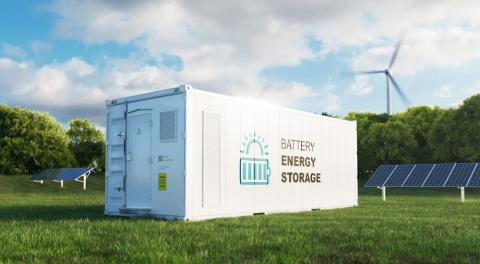IEEFA op-ed: India is helping bring the era of coal to an end
SYDNEY—Tony Abbott, Australia’s former prime minister, was photographed in Parliament just a couple of weeks ago clutching a document titled, “Coal era is not over.”
According to Australia’s pro-coal “Monash Forum” parliamentarians, of which Abbott is a founding member, India in particular is ensuring a rosy future for coal exporters such as Australia by way of plans to construct 116 new power stations with a total capacity of about 88 gigawatts (GW).
Ironically, on the same day the Forum put out a “fact sheet” on foreign coal markets, NTPC, the largest owner and developer of domestic coal plants in India, shelved its 4GW Pudimadaka Ultra Mega Power Plant project in the state of Andhra Pradesh.
“Redesigning the project after acquiring 1,200 acres from the APIIC (Andhra Pradesh Industrial Infrastructure Corporation) was found unviable … we have decided not to go ahead with the project,” an NTPC official told the Hindu.
This decision, to cancel the country’s largest planned new coal-fired power station, is just the latest step in India’s remarkable and ongoing energy transition and the first of two bits of recent seismic news on this front.
Since the start of 2010, through postponements and cancellations, India’s coal plant pipeline has shrunk by 547GW. To put that number in perspective, it’s helpful to remember that it amounts to almost three times Germany’s total installed capacity.
Today, more than 80GW of coal-fired capacity are reported as still “progressing” through approval processes, which in fact more accurately translates as “yet to be formally cancelled or put into administration.”
To take but one example: Adani Power Ltd. is one of the stronger private coal proponents but is saddled with net debts of US$7.2 billion, shareholder funds of just US$130 million and annual losses since 2010. Its plans to build a US$2 billion 1.6GW import coal plant at Godda in Jharkhand and a US$2 billion import coal plant at Udupi, Karnataka, are neither logical nor bankable as currently configured.
In fact, of the remaining pipeline coal-fired generation pipeline in India, IEEFA estimates that no more than 10-20GW might actually see the light of day. That means more than 84% of India’s 2010 coal pipeline will have been cancelled when all is said and done.
What’s more, if India’s 2018 National Energy Plan forecast of 48GW of end-of-life coal plant closures by 2027 occurs, then India is now rapidly approaching peak thermal coal. The coal industry will no doubt question this conclusion, but underlying it are irrefutable numbers.
New imported-coal-fired power costs of between Rs5-6/kilowatt-hour (kWh) (US$75-90/megawatt-hour (MWh)). Domestic coal costs are generally Rs3-4/kWh (US$45-60/MWh), depending upon whether the coal is produced from mine-mouth configurations or shipped in from afar. At the record low May 2017 auction, solar was priced, by comparison, at Rs2.44/kWh (US$38/MWh).
New solar-generated electricity costs less than half that of new imported-coal generation, and while the price of coal has doubled over the past two years, IEEFA forecasts the price of solar dropping by double digits every year.
In its New Energy Outlook 2018, Bloomberg New Energy Finance has the levelized cost of electricity (LCOE) of wind and solar in India dropping US$40/MWh. It would come as no surprise to see that number revised down another 25% within the next year.
NTPC’s management is astute. It has played a careful waiting game with the Pudimadaka project, keeping it alive until it became abundantly clear it was a non-starter. NTPC itself is transitioning to clean energy and with India’s coal sector already riddled with debt, it had no intention of attaching another US$5 billion fossil fuel millstone around its neck.
This brings us to the second recent seismic piece of transition news out of India. On June 21, Indian New and Renewable Energy Minister R.K. Singh announced a 100GW solar tender, with an emphasis on battery storage and domestic solar manufacturing.
This announcement follows on the heels of plans for 8-10GW of annual onshore wind installations, plus an ambitious 30GW of offshore wind by 2030 and the launch of an additional 10GW solar tender this month via the biggest single solar reverse auction in history,
ENERGY ANALYSTS HAVE AN UNDERSTANDABLE TENDENCY TO TAKE ANNOUCEMENTS OF THIS SCOPE with a pinch or two of salt. After all, in their search for capital, developers can emit almost as much hot air as the plants they build.
But with India already exceeding expectations in its quest to hit its ambitious goal of 275GW of renewable energy capacity by 2027, credit is due, in no small part because Japan’s richest man, SoftBank founder Masayoshi Son, has reportedly told Indian Prime Minister Narendra Modi he will underwrite most of 100GW with a US$60-100 billion Indian solar investment.
India’s energy sector still faces a host of challenges, not the least being grid integration, but the magnitude of its achievements to date is testament to a government with a smart, sustainable vision for the future.
Driven largely by a population that continues to choke on hazardous air, the Indian government is creating a blueprint for how to deliver clean energy at a fraction of the cost of fossil-fuel-generated power, using less agricultural land, far less water and with a tiny fraction of the pollution and carbon emissions.
Other countries with coal-project pipelines, such as Vietnam and Japan, will take note of what’s occurring in India, and while coal-fired electricity generation will not disappear overnight, the end of its era will happen faster than many expect.
Tim Buckley is IEEFA’s director of energy finance, Australasia. He is based in Sydney. A version of this commentary appeared recently in Asia Times.
RELATED ITEMS:
IEEFA op-ed: Japan remains mostly stuck in the energy policy past
IEEFA Report: Advances in Solar Energy Accelerate Global Shift in Electricity Generation
IEEFA Asia: Opportunity Now in Broad Electricity Transformation Trends















